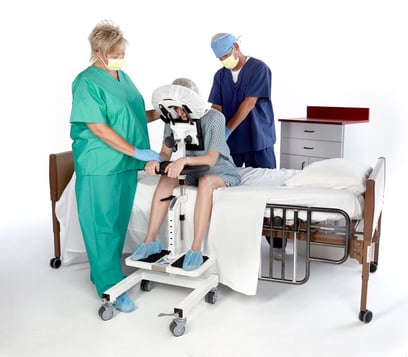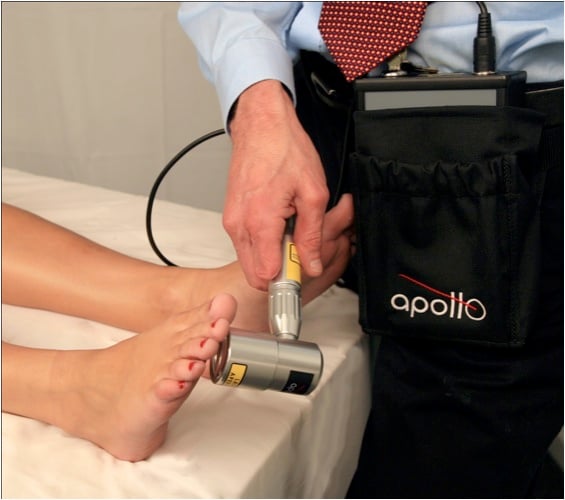Expecting a baby? Congratulations! Giving birth today is not the same as when your mother gave birth. You have new options and different choices to make. You will recover faster than even before, and your participation will be requested. Ready? Let’s talk about three tips that will help you to power through the labor and delivery process.
This article was curated from a post by Dr. Mark Zakowski, MD, published on kevinmd.com and can be found here.
Let me help you
 via shutterstock.com via shutterstock.com |
You may not know it, but I’m your guardian angel during your labor and post-delivery experience. As a physician anesthesiologist specializing in obstetrics, my team and I are there first and foremost for your medical safety. We are there to protect you and your unborn child not just from pain, but to serve as your acute medical and critical care experts by monitoring, adjusting and handling the unexpected — for example in the event of excessive bleeding, seizures or an emergency delivery. You and I share the common goals of delivering a healthy baby, while ensuring you remain healthy too.
In order to achieve these goals, you need to tell me your complete medical history including any prior surgeries, allergies, and medications. Don’t forget to mention both herbal and over-the-counter remedies, because some herbal or homeopathic compounds can interfere with blood clotting or alter your response to anesthetics. During labor, many women are in pain and may forget or skip important pieces of information. While asking patients about their medical history, I’ve often been told: “Just give me the epidural!” So bring your information or make sure your labor partner knows it.
Please consult and talk to your physician anesthesiologist ahead of time if you have questions or significant medical problems, e.g., back problems, anxiety disorder, kidney or heart disease; many hospitals have high-risk obstetric anesthesiology consultation clinics. And take a prenatal class. Being prepared helps me help you!
Pain relief, your way
Moms-to-be now have pain relief options their mothers just didn’t have. In the “old days” higher strength medications were used, which left the legs numb and often immobile (e.g., “saddle block”) or, in even earlier times, women were put into a “twilight” stage using medications like morphine and scopolamine. These women wouldn’t remember the pain of childbirth, but they also wouldn’t remember being handed the baby after delivery either. These methods are no more!
The overwhelming majority of women choose an epidural for pain relief during labor. Medication goes through your epidural catheter into your back, taking away the pain and slightly numbing you from the belly button down, but allows you to be awake, participate and enjoy your delivery. Nationally, over 60 percent of all women chose epidurals for pain relief; with over 80 percent of women choosing epidurals in hospitals that support larger obstetric services such as 24/7 obstetric anesthesia care.
The modern epidural can be adjusted to whatever level of pain relief you choose — complete or partial. Myth busting alert: you should always be able to move your legs with an epidural, and the mixture of medications you receive can be tweaked or titrated to your particular needs during almost any stage of labor.
 Your obstetric physician anesthesiologist is your partner in pain relief, looking to provide the best labor experience possible. There are walking epidural, epidural lite or regular strength epidural medication mixtures. Nitrous oxide inhaled to help take the edge off of labor pain has become more commonly available, although nitrous oxide does not significantly reduce pain like an epidural — you just don’t care as much that it hurts. Your epidural medications can or may need to be tweaked during your labor because every labor is different. The position of the baby changes during labor, your sensitivity to pain medications change and often the obstetric plan of management changes. Therefore, your epidural is constantly being monitored and adjusted to provide the degree of pain relief you want within the context of what’s going on medically during your labor.
Your obstetric physician anesthesiologist is your partner in pain relief, looking to provide the best labor experience possible. There are walking epidural, epidural lite or regular strength epidural medication mixtures. Nitrous oxide inhaled to help take the edge off of labor pain has become more commonly available, although nitrous oxide does not significantly reduce pain like an epidural — you just don’t care as much that it hurts. Your epidural medications can or may need to be tweaked during your labor because every labor is different. The position of the baby changes during labor, your sensitivity to pain medications change and often the obstetric plan of management changes. Therefore, your epidural is constantly being monitored and adjusted to provide the degree of pain relief you want within the context of what’s going on medically during your labor.
Less means faster return to home
Welcome to the age of Enhanced Recovery After Surgery (ERAS), or in this case, after delivery. Women used to be on bed rest for up to two weeks after a cesarean delivery. No more! Our aim is to get you comfortable, out of bed and walking around at home with your family as soon as possible. Many women are now going home two to three days after cesarean delivery. In the United Kingdom, some women are even going home after the first day!
Physician anesthesiologists have been leading innovators for ERAS. For cesarean delivery, the recommendation is to combine different forms of pain relief, or multi-modal analgesia, in order to give you better pain relief, use fewer opioids and get you out of bed and moving sooner. You can also help prepare for a faster recovery. You are allowed to drink water (or clear sports drink) until two hours prior to surgery or delivery if you are healthy. You can drink and eat even sooner than before after an uncomplicated cesarean. Drinking and eating help speed recovery and can result in an earlier discharge home. After a Cesarean delivery, please take any pain medication prescribed regularly, not “as needed,” at least for the first two days. Decreasing acute pain helps decrease prolonged pain and reduces the chance of developing chronic pain or even postpartum depression. Modern techniques tend to use scheduled “around the clock” acetaminophen and anti-inflammatory (e.g., ibuprofen) with opioids as needed for “breakthrough” pain (i.e., pain occurring in spite of your other medications). Taking fewer opioids means avoiding the occasional side effects of slower recovery of bowel function and opioid-induced changes in pain sensitivity (hyperalgesia). Fewer opioids also means less chance of becoming tolerant or starting the cycle of needing more and more opioids for a longer time, thus risking addiction. You should be off of all opioids within five days following a cesarean delivery. Taking these drugs beyond five days increases your chances of becoming addicted.
If you’re wondering about breastfeeding, you are in luck. All of the routine medications you receive for pain in the hospital are compatible with breastfeeding. Childbirth is one of the most challenging yet rewarding events you will go through in your life. Preparing for the labor and delivery experience will ensure the process goes as smoothly as possible. Thank you for allowing me to help you welcome this new addition to your family.




